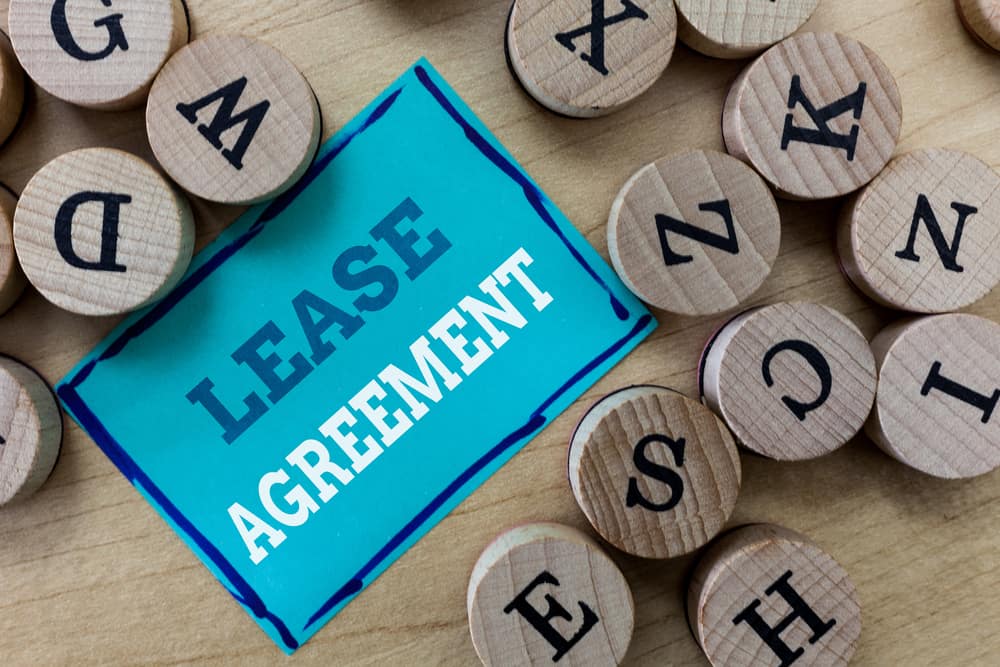Key Takeaways
When you’re looking to rent for the first time, it can be tough to know everything your landlord expects or what you need to qualify during the application process. Even if you have enough income and a good credit score, you might still not be approved for renting a home or apartment unless you have a cosigner or guarantor on lease.
Not sure what a lease guarantor or cosigner is, or why you even need one or the other? Let’s break down both of these subjects in detail.
What is a Guarantor on a Lease?
A rental lease should be simple: a tenant agrees to pay rent every month and pay for damages. But as many landlords know from experience, many tenants who appear responsible fail to pay rent on time or are otherwise financially irresponsible.
To mitigate risk, many landlords require lease guarantors before they will approve leases for young, inexperienced, or credit-risky prospective tenants.
In brief, a lease guarantor is a person who cosigns a rental lease alongside the intended tenant. They agree to pay rent if the tenant fails to do so at any point during the lease’s term. Because lease guarantors take on a lot of financial responsibility for the prospective tenant, guarantors are often parents, friends, or family members, particularly if the prospective tenant was formerly one of their dependents.
Note that guarantors and cosigners are sometimes referred to interchangeably because they both have broadly the same responsibilities for tenants. Like guarantors, cosigners must also pay rent if a property’s tenants fail to do so. In essence, lease guarantors provide landlords with a bit of financial peace of mind.
How a Guarantor Lease Works
A guarantor lease works almost identically to a regular rental lease, with the added provision that it includes one or more clauses that specify that the lease guarantor will be on the hook for the tenant if the tenant doesn’t pay rent or other expenses on time.
Guarantor leases are often required for building ownership or new tenants because landlords don’t want to have too many payment cycles where they aren’t receiving income from one or more tenants.
Not just anyone can sign a guarantor lease, however. Most landlords run potential guarantors through a screening process and ensure they have enough income and good enough credit to warrant trust. Additionally, rent guarantors must keep in mind that their credit scores may be affected during the screening process if one or more organizations check their credit.
[ Thinking about investing in real estate? Register to attend a FREE online real estate class and learn how to get started investing in real estate. ]

Why Would You Need a Rent Guarantor?
A rent guarantor is just a bit of security for landlords who don’t want to rent their property out to tenants who may not be as reliable as they seem.
In many cases, lease guarantors and/or cosigners are required for tenants who:
-
Are young adults who are renting for the first time in their lives
-
Have limited income that may fall below the recommended requirement (usually 40 times monthly rent)
-
Are students and who may be sharing space with other students
-
Have just started a new job and may not have an established income
-
Cannot produce a tenant referral
In each instance, the prospective tenant isn’t as ideal a renter as the landlord would like. But a lease guarantor allows the landlord to approve tenants like these individuals without taking on too much individual risk.
There are other options landlords can take, such as charging a much higher security deposit or requiring the first and last month’s rent upfront. But having a cosigner or guarantor is usually the best way to guarantee consistent income from rent.
A cosigner or guarantor is always legally bound to pay rent in the tenant’s place. In the case of a delinquent tenant, landlords can count on consistent income rather than having to settle for a larger than average lump sum in the form of a security deposit or last month’s rent.
Lease Guarantor vs. Cosigner
The average rental lease may use the guarantor and cosigner terms interchangeably, but they’re not the same thing.
Lease guarantors are legally required to pay rent if it is unpaid by the tenant they are bound to. However, lease guarantors do not share the lease with the tenant they financially protect.
Instead, cosigners have the same financial responsibilities as lease guarantors. But cosigners are usually added to the lease as another potential tenant. Cosigners have the right to occupy the property in question, especially if the current tenant vacates the property while being delinquent on their rent.
Cosigners have a little more flexibility in terms of living situations. For example, a cosigner on a rental lease can live in the unit and pay their fair share of the rental price while simultaneously taking on responsibility for paying the rest of the rent if the other tenant defaults.
So, bottom line: cosigners might be immediately responsible for paying rent if they live in the property with their co-tenant. Lease guarantors do not live in the same property and are only responsible for paying rent if the current property tenant defaults.
What Are the Requirements for a Guarantor?
Generally speaking, landlords require strict financial benchmarks for someone to qualify as a guarantor. They are often more strict about these than they are for the finances of prospective tenants.
Guarantors must usually have:
-
An income of between 80 and 100 times the monthly rent amount
-
Good income and payment history in the form of pay stubs and/or tax returns
-
A Social Security number
-
A good credit score to show creditworthiness
Landlords usually only accept guarantors who they believe will be trustworthy enough to pay rent if the tenant they are signing for defaults on their payments.
Who Can Act as Your Guarantor?
Theoretically, anyone can act as a loan guarantor. But most renters get someone close to them to take on this financial responsibility, such as family members and close friends.
On the other hand, some companies will volunteer to act as a guarantor on a lease agreement for fees. First-time renters should choose their guarantor carefully and remember the tremendous financial responsibility of the guarantor.
Pros & Cons of Having a Guarantor Lease
Guarantor leases have several major advantages, including:
-
Landlords always have the ability to approach a third party for damages or back rent if the tenant doesn’t pay on time. Lots of guarantor leases even allow landlords to go straight to the guarantor instead of the tenant if they don’t receive a rent check promptly
-
The presence of a guarantor on a lease is very useful for preventing eviction if a tenant is delinquent for one or more reasons
-
In some cases, adding a guarantor to a lease is easier than providing a higher than average security deposit
-
A guarantor can make young tenants without a rental history easier to approve for landlords
That said, guarantor leases do come with several downsides, including:
-
A guarantor does not necessarily ensure rent will be paid on time, in some cases landlords will still have to contact the tenant and guarantor for the late payment
-
Having a guarantor on the lease means that, if the guarantor also refuses to pay rent, the landlord must take two individuals to court, which could be more expensive
-
Not all guarantors are willing to pay rent for damages that their cosigner may incur, which can again make the eviction or payment recovery process more challenging
-
Similarly, a guarantor does not mean the renter will be a good tenant only that someone else will be responsible if the tenant does not pay rent

How to Create a Guarantor Lease
Landlords can create guarantor leases fairly easily. Because guarantors need to cover all the same financial and property obligations of regular tenants, they effectively sign identical copies of the same lease as their cosigners.
With that in mind, a guarantor lease should include several major items like:
-
A list of the involved parties, including the guarantor, tenant, and landlord
-
A breakdown of the detailed obligations for the landlord and tenant
-
The guidelines for who’s allowed to live on the property
-
The lease terms, including the process for ending the lease or lease termination
-
If applicable, an option to purchase the property
-
Notice periods
-
The security deposit amounts and due dates
It’s usually a good idea to hire the services of a legal or real estate professional to look over a guarantor lease before giving it to prospective tenants or their guarantors.
Should Landlords Screen Guarantors or Cosigners?
Yes, absolutely. Wise landlords thoroughly screen every applicant who wants to rent their properties, and the same wisdom should apply to cosigners or guarantors. Landlords should check for many of the same qualifications from guarantors as they do for prospective tenants, like credit scores, proof of employment and income, and do a detailed background check.
This all goes a long way toward ensuring a potential guarantor is responsible enough to take on the title and rent payments if needed.
Should Landlords Prioritize Applicants Who Don’t Require Guarantor?
All landlords have the right to choose qualified applicants for their properties, provided they do not discriminate based on protected attributes or classes. Therefore, landlords can and should often prioritize applicants who don’t need a guarantor, as those prospective tenants will likely be more financially secure and better bets for on-time rental payments.
So long as a landlord can prove that their decision is legitimate and complies with all fair housing laws, they do not have to choose a tenant who requires a guarantor or cosigner. In many cases, choosing a qualified applicant who doesn’t need one of these extra individuals is a better choice for your long-term financial stability.
Summary
All in all, lease guarantors and cosigners are very similar, even if they include one significant difference: cosigners sometimes live at the same property as their cosigned tenants. A cosigner or guarantor on lease will allow landlords to accept tenants who may not qualify for a rental lease otherwise, but landlords aren’t required to accept tenants who require guarantors under any circumstances.
Ready to start taking advantage of the current opportunities in the real estate market?
Click the banner below to take a 90-minute online training class and get started learning how to invest in today’s real estate market!


